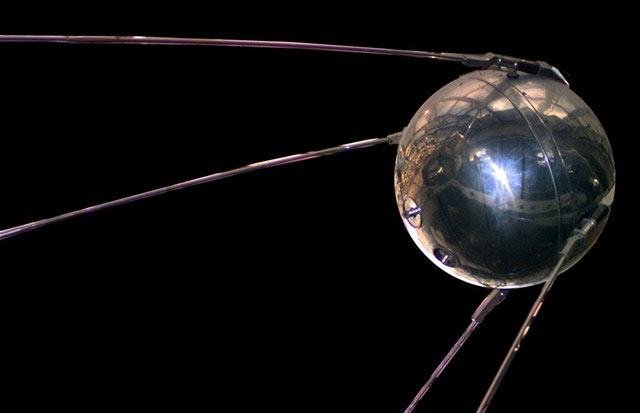Sputnik and the code that the Americans could not decode
The Sputnik Crisis was a period of public fear and anxiety in Western nations over the perceived technological gap between the United States and the Soviet Union caused by the Soviet launch of Sputnik 1, an artificial satellite first in the world.
On October 4, 1957, Sputnik 1 was the first object to enter Earth's atmosphere in a controlled fashion and the first to achieve what until that point had only been theorized: orbit stable, moving high in the skies of nations with impunity. At the time, this was considered a disaster for the West.
What did Sputnik 1 see up there? Is there any evidence of heaven, hell, aliens or something completely unexpected? Surely the Soviets would know everything that humanity at that time still did not know, Sputnik moved high above and transmitted information back to observers below.
Americans could receive and hear Sputnik's messages, but they had no way of understanding what they were hearing. Decoding those messages became the immediate priority: What did Sputnik say to the Soviet Union?

In the early 1950s, flights by Lockheed U-2 spy planes over the Soviet Union provided intelligence that the United States had an advantage in nuclear capabilities. However, studies conducted between 1955 and 1961 showed that the Soviet Union was training two to three times as many scientists per year as the United States. The successful launch of Sputnik 1 showed that the Soviet Union had achieved a significant technological leap, which was interpreted as a serious threat to US national security, prompting the US to increase federal investment in research and development, education and national security.
In fact, Sputnik gave any scientist who was watching invaluable information. Observers from the ground watched the launch vehicle pass through the upper atmosphere and obtained a large amount of real-world telemetry data as well as other data that could be used in rocket programs their.
The Soviet Union also made no attempt to hide signals from their satellites. Any amateur radio signal operator can hear a series of beeps transmitted from outer space. The Americans, who watched the rocket launch with keen interest, grasped every nuance of the message.
This was the beginning of what became known as the "Sputnik Crisis" . Americans could not believe that Soviet technology was so superior, and the Western world fell into crisis over this apparent gap in knowledge.

The Sputnik Crisis was a pivotal event in the Cold War, initiating the creation of NASA and the Space Race between the two superpowers. The satellite was launched on October 4, 1957, from the Baikonur Cosmodrome. This created a crisis reaction in national newspapers such as The New York Times, who mentioned the satellite in 279 articles from October 6, 1957 to October 31, 1957 (more than 11 articles). everyday).
This was the beginning of the "Space Race" , which led to the founding of NASA the following year and began a chain of events that led to the Moon landing more than a decade later. The American public was similarly captivated by this Soviet wonder, with the New York Times publishing 279 separate articles in October 1957 about Sputnik, an average of 11 a day.
So will Americans ever decode that message? Their brightest minds have attempted this task on their own, but it seems that Sputnik is transmitting information that the US cannot decode.
It took many years for the secret of Sputnik 1 to be revealed to the West. When they finally understood what the satellite was sending, the Americans were shocked by their misdirected decoding .

One contributing factor to the Sputnik crisis was that the Soviet Union did not release a photograph of the satellite for five days after launch. Therefore its original appearance remains a mystery to Americans. The media stirred up moral panic by writing sensational stories about the event.
The Soviet Union's Sputnik space program , throughout its history, was predicated and built on risk-taking and an incomplete understanding of technology: being a leader in its time was important. much more important than building reliable technologies.
Sputnik does not send data to space beyond Earth's atmosphere . The series of beeps was simply an audible sound that anyone could hear; it only served to confirm to the Soviet Union that their space-launched rocket was actually operational and safe. The planet survived the journey.
All Sputnik wants to say is "here I am" .
- Sputnik artificial satellite: New era of space
- An American Indian who traveled with Iceland to Iceland?
- Sputnik's 60th Anniversary 1: The glorious past of the Russians
- Little interesting things about QR codes
- Save the code subconsciously
- Do Americans come to the real Moon?
- Deciphering code makes millions fear
- Bar Code Audio Bar Code Testing
- Video: WannaCry's terrifying spread rate
- Simple idea, turns out the 'beep' sound of electronic devices has very deep meaning and origin
- Americans are 'weaker' than other developed nations
- CMS launched a series of new laptop products
 Van Allen's belt and evidence that the Apollo 11 mission to the Moon was myth
Van Allen's belt and evidence that the Apollo 11 mission to the Moon was myth The levels of civilization in the universe (Kardashev scale)
The levels of civilization in the universe (Kardashev scale) Today Mars, the sun and the Earth are aligned
Today Mars, the sun and the Earth are aligned The Amazon owner announced a secret plan to build a space base for thousands of people
The Amazon owner announced a secret plan to build a space base for thousands of people